Motorhome advice: How to fit twin high-capacity batteries
All motorhomes have limited off-grid power capacity, which can leave the owner short of energy, particularly when power-hungry equipment is being used. This is especially true for those of us who want to use additional electrical items via a mains inverter, such as a microwave or a hairdryer.
I often use our Swift Rio for short overnight breaks and find myself requiring use of the microwave or a fast brew with the electric kettle, so I installed a hefty low-frequency, pure sine wave inverter. My inverter calls for significant power demands, typically 100A for several minutes when using the microwave and I need to continue to power everything else, including the lights, television and satellite dish (and the PS4 games console when my son is resident). It was clear I was going to need a battery set-up that provides an excellent high-current performance, uncompromised life.
My Swift Rio was equipped with a solar panel and an excellent Yuasa 80Ah battery mounted sideways under the driver’s seat. The passenger seat has the same volume beneath, but Fiat has put the spare wheel jack/tool kit here. This can easily be removed (to stow elsewhere in the habitation area), leaving space for a second leisure battery if required.
I looked at what was available and there’s a bewildering range of battery technologies. The best batteries on paper seem to be lithium iron phosphate (LiFePO4) models but these would not work efficiently with Swift’s existing smart charger and solar panel. In addition, the overall cost of buying lithium and dealing with the present charging system would easily exceed £2,000.
Several hours of research later, I discovered an interesting range of leisure batteries manufactured by Victron Energy. Victron has a series of so-called AGM Super Cycle leisure batteries and it just so happens that the 170Ah one (model BAT412117081) fits sideways under modern Ducato cab seats – it’s uncanny and almost as if they were designed for them. Since they use sealed AGM technology, there are no safety ventilation and orientation considerations, either.
I ordered two of these from an authorised Victron supplier (around £350 each including VAT and delivery) to fit under both seats, to give a total capacity of 340Ah. As each battery weighs 45kg, get help to lift them into the cab. You also need to take this extra weight into account by deducting it from your payload (minus the weight of the original Swift battery).
I do not intend to run the Victron batteries beyond a 60% discharge and expect to be using the motorhome off-grid at least twice a week, every week. The total cost of this project was under £800. That’s a tidy sum, but still a fraction of the cost of a lithium set-up and it will be interesting to revisit the matter in five years’ time to compare battery technologies and their costs.
Future planned developments to the present set-up will also include a 60A battery-to-battery charger and some modifications to the original Sargent control box to disable the joint alternator charging.
How to fit twin high-capacity deep-cycle batteries to your motorhome or campervan:
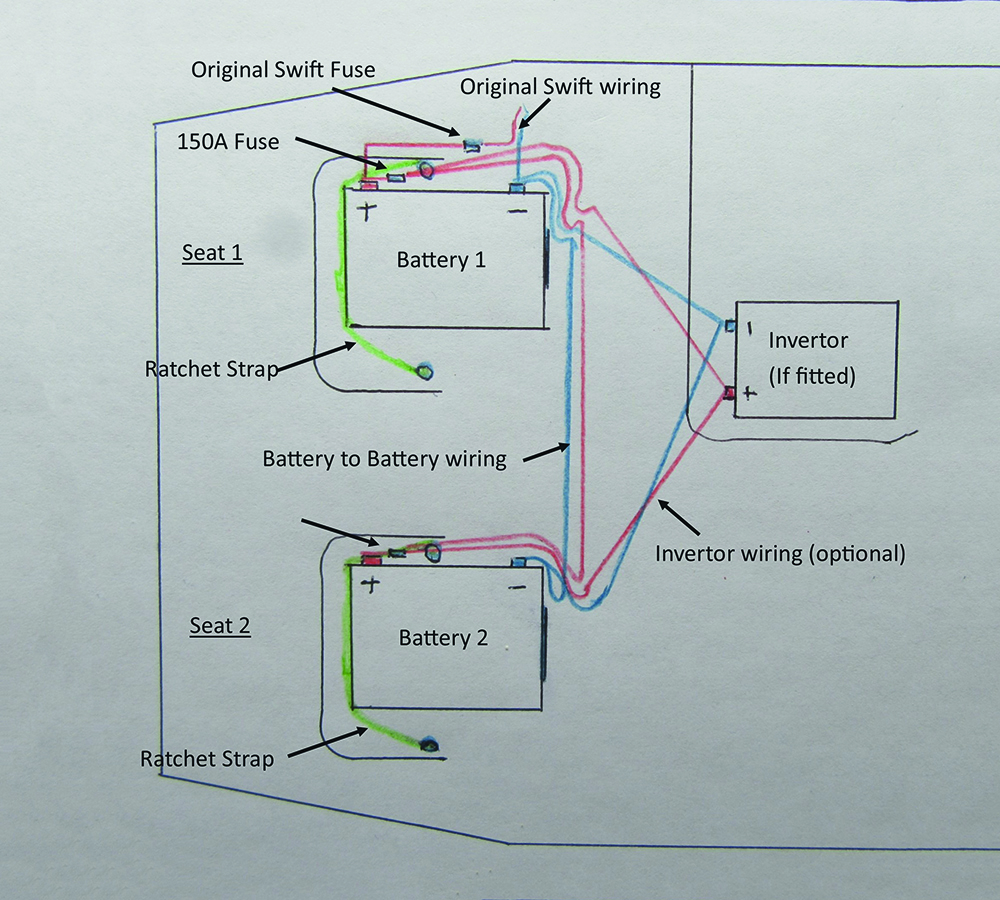
1 This diagram shows the wiring options I considered for both batteries linked to my inverter. In my configuration, I used two-gauge (6.5mm diameter) copper wire
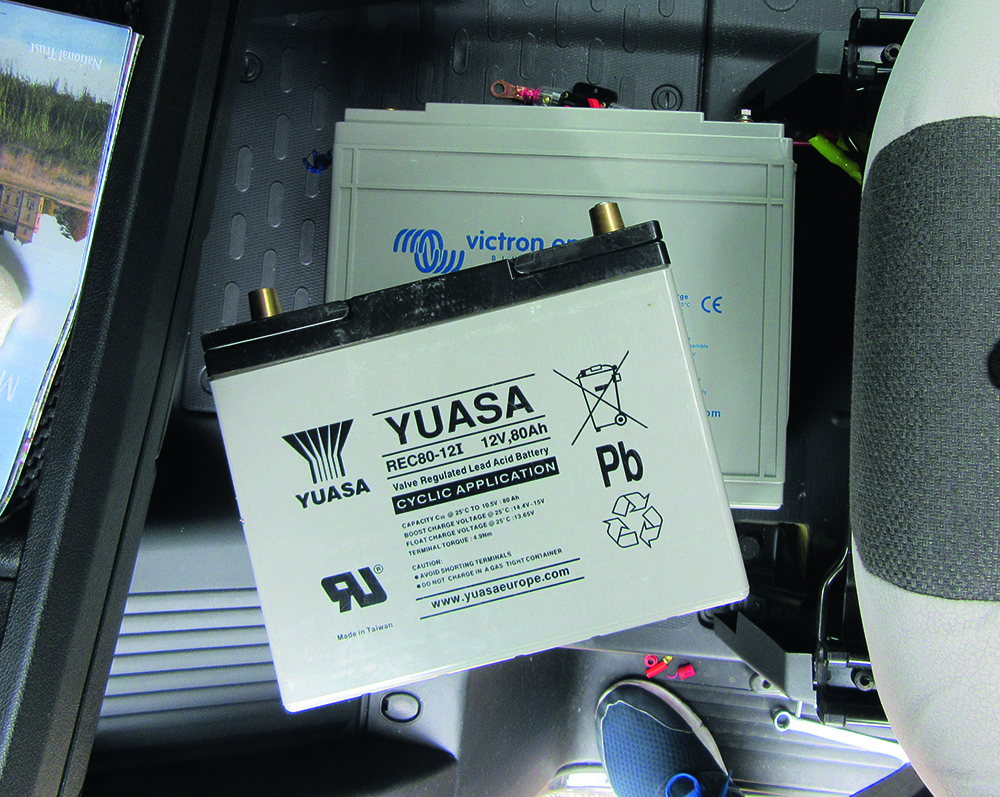
2 Battery positioning is critical, particularly as the new Victron battery is clearly larger than the factory-fitted Yuasa battery. The batteries were connected in parallel (positive to positive, negative to negative) by running suitably rated copper wire under the cab floor between both front seats. Additional cabling runs to the inverter, which is mounted under the rear passenger seat. If you do not have an inverter you can simply parallel both batteries
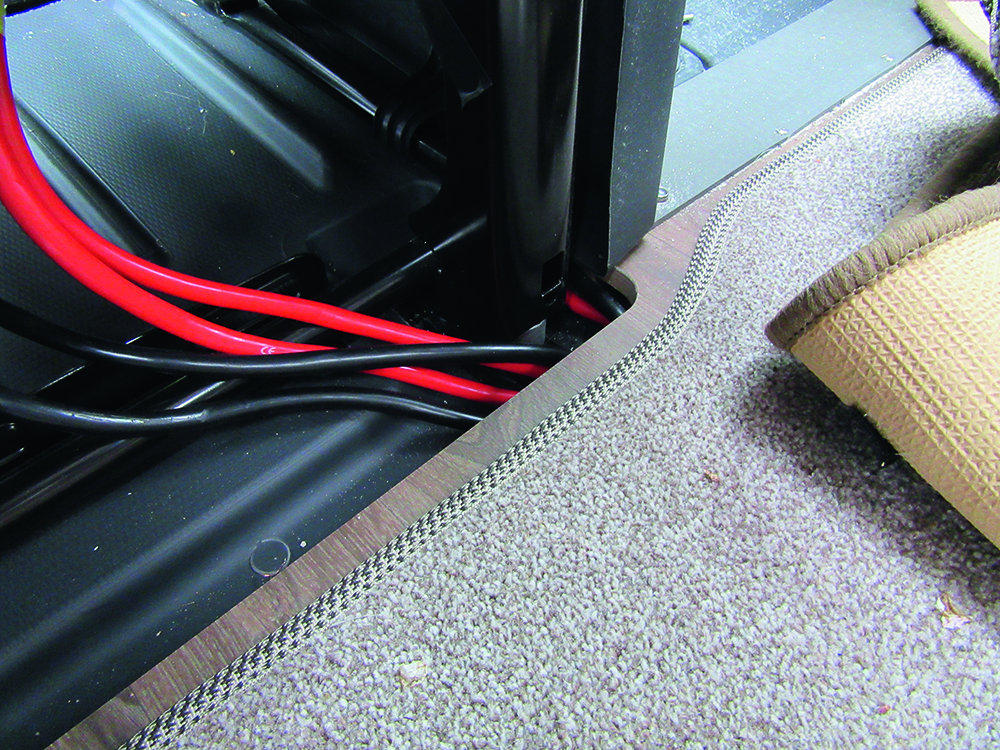
3 It is critical to ensure the cables are routed in a way where they are free of any obstructions and to rule out possible compression damage during the life of the installation. I used conduit on the outside of the wires to protect against chafing and remember to use grommets if they pass through any panels
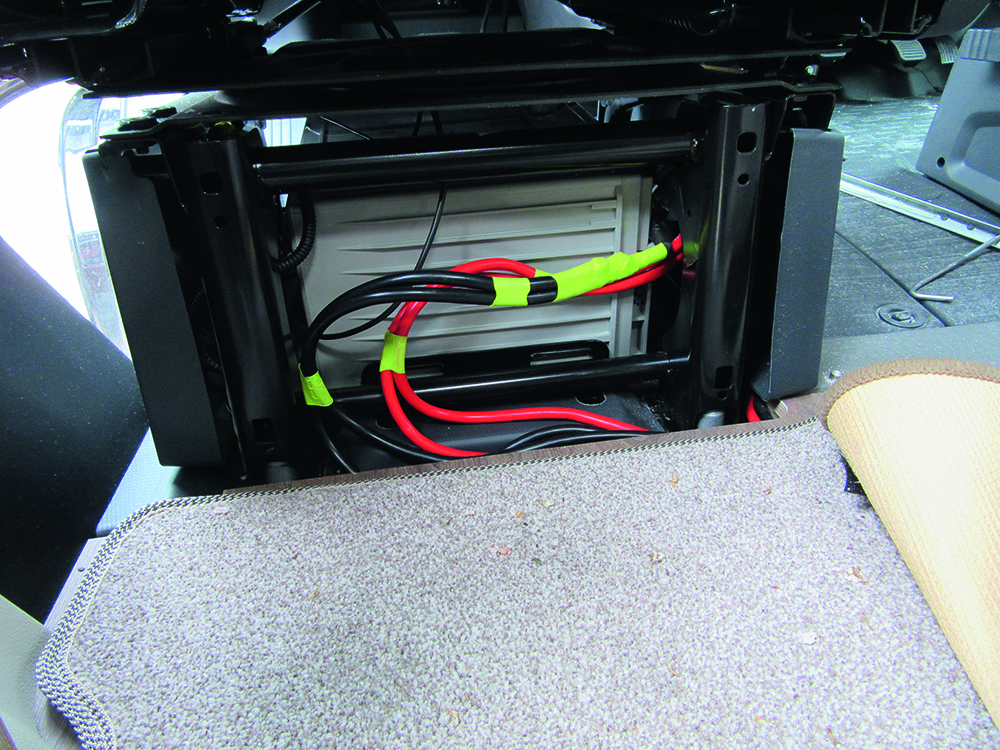
4 Fortunately, Swift’s Rio range lends itself to easily pass cables in the voids between cab and habitation floors. This is the passenger side wiring
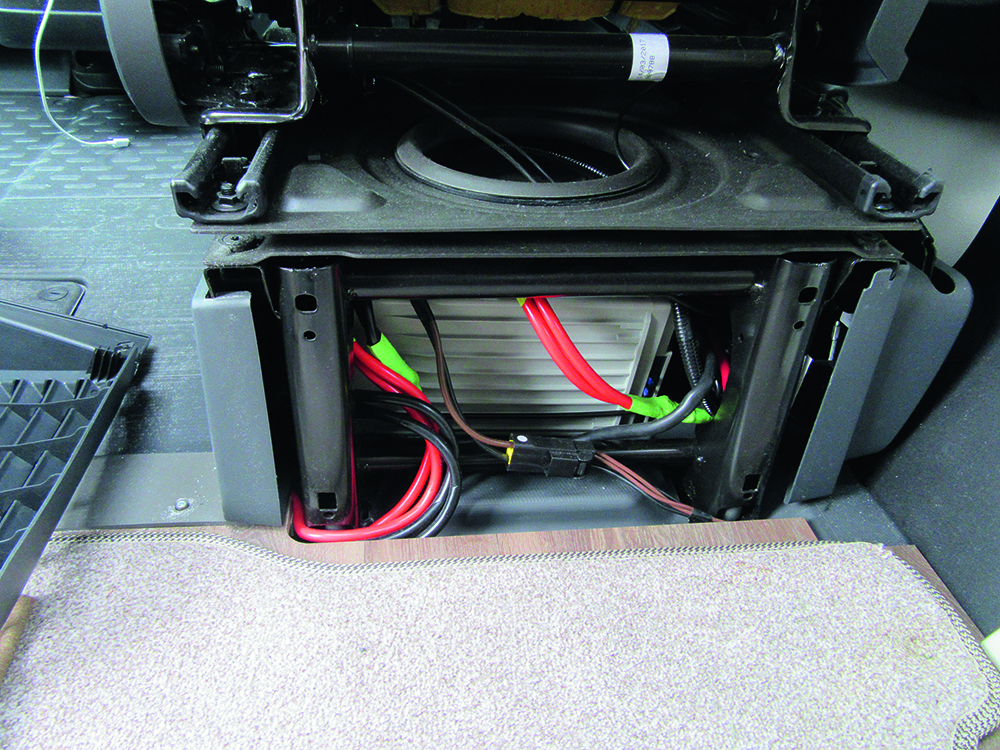
5 On the driver’s side, the battery wires were run from the terminals to the rear of the cab seats (after removing the front and rear seat base trims) underneath the Rio wooden cab floor panel. Be careful not to pinch any existing wiring under these seats as there will be additional wiring present, including the seatbelt sensors and Swift’s pre-existing battery wiring
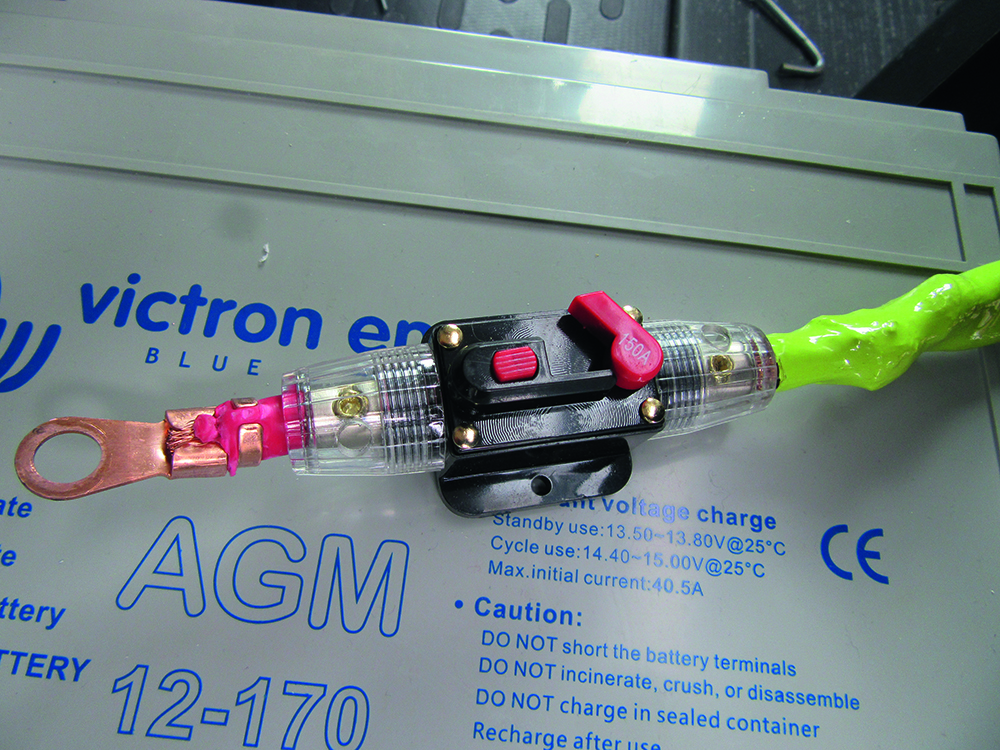
6 For safety, 150A fuse breakers were fitted and the ends attached to suitably sized ring terminations to suit the Victron battery’s bolt-style terminals. All the cable joins were soldered and double insulated with heat-shrink sleeving
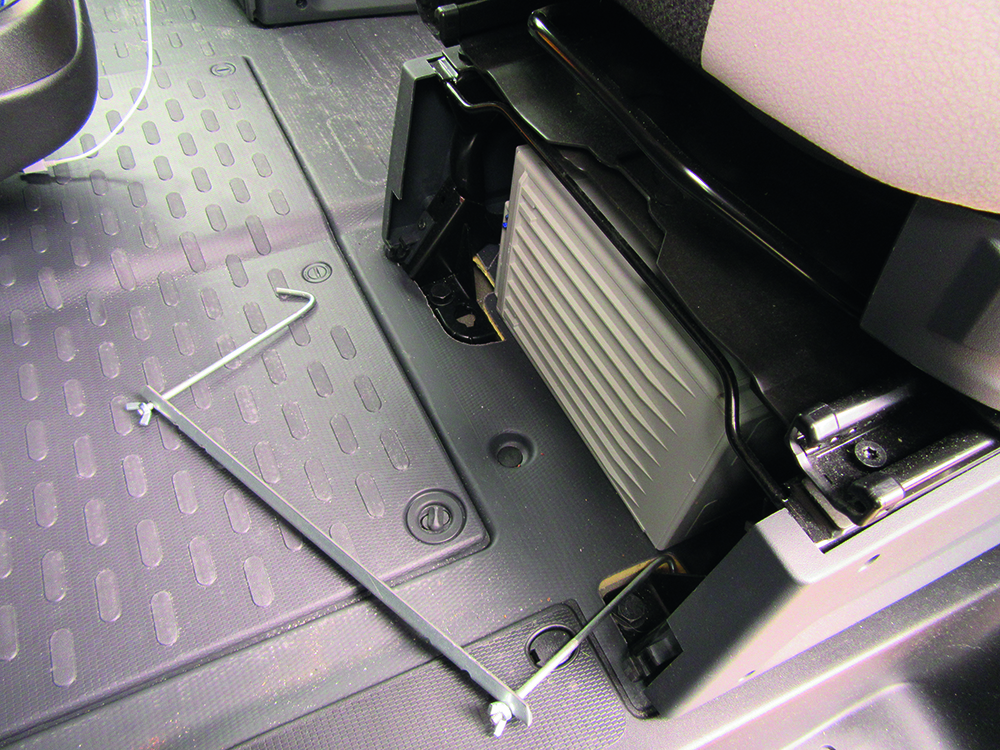
7 When the original Swift leisure battery was removed, I found it was held in place by a metal bracket that hooks to the seat frame. This can easily be modified by shortening the threaded ‘J’ hooks and reforming them in a vice
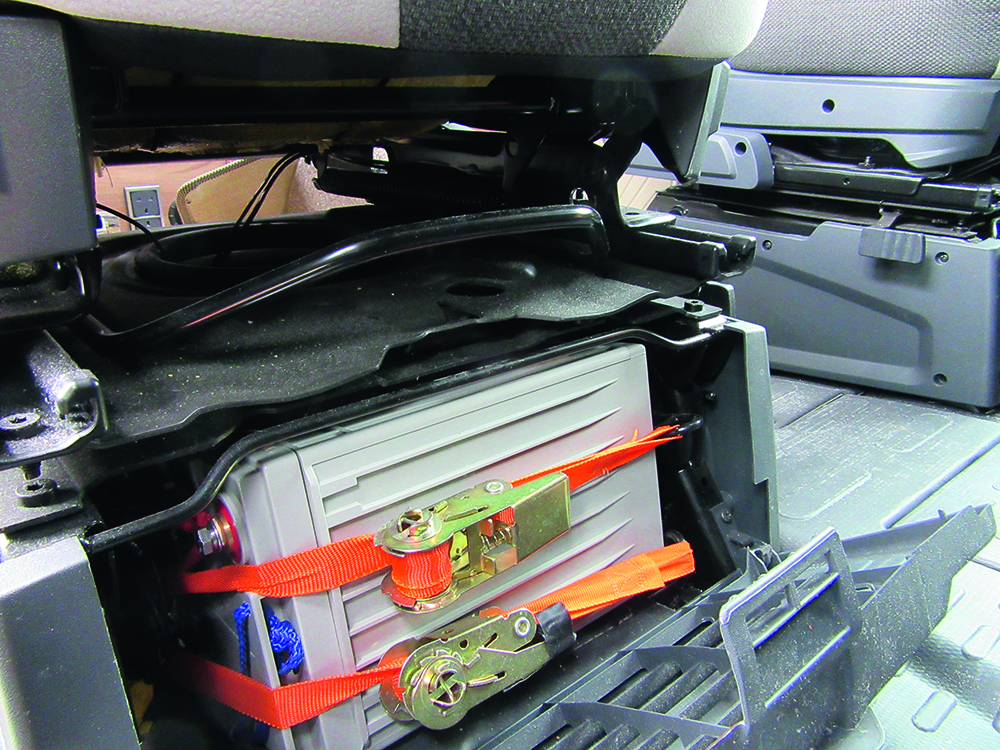
8 Alternatively, both batteries can be strapped in place using cargo ratchet straps. It is vital that both batteries are secured to the underseat chassis and that there is no chance whatsoever of them moving around.






.jpg)


Recent Updates
Engine management lights: all you need to know
What is the engine management light? What does it mean, and what do I have to do? ...
Motorhome air suspension: all you need to know
Motorhomes are heavy and the additional weight of equipment and height of the bodywork can increase the loads ...
Motorhome WiFi: how to get better motorhome internet
Staying connected on the move is more and more essential, so relying on campsite WiFi isn't an option – here ...
A class of their own - our guide to A-class motorhomes
Thinking of trading up to an A-class, or even going straight to the top of the motorhome tree? We guide you ...
Explore overseas on a motorhome dream tour
Enjoy exotic travel in a campervan or motorhome by hiring, swapping with someone else or exporting your ...
Motorhome water systems: everything you need to know
On-board water is an important part of every motorhome – here’s everything you need to know ...
Campervanning in Europe: what you need to know
Whether you're planning a leisurely drive through the French countryside, navigating bustling city streets in ...
Campervan security: all you need to know
With thefts on the increase, it’s important to know how to keep your campervan secure and prevent campervan ...
Campervan furniture: everything you need to know
Our campervan experts guide you through all the essentials for your campervan, including tables, chairs, ...
Campervan finance: how to fund your purchase
Here we look at the different types of campervan finance available, to help you decide what’s the best option ...
Other Articles
Britain’s best used motorhomes
Want a great motorhome without paying the premium for a new one? Here's a guide to the best you can get in the pre-owned market for each layout, ...
Which motorhome? Choosing the perfect motorhome for you
Choosing a motorhome or campervan is one of the biggest buying decisions you’ll ever make, so it's important ...
Campervan washroom essentials: stay fresh on the road
Our guide will take you through the campervan washroom essentials you'll need so you're well-prepared for ...
Dogs in campervans: all you need to know
Follow our advice and your dog will enjoy campervanning as much as you do ...
Electric campervans: all you need to know
Our guide will take you through everything you need to know about electric campervans and what the future ...
Motorhome electrics: a complete guide to your motorhome electrical set-up
Motorhome electrics can dramatically enhance the convenience and comfort of your vehicle – but they can be ...
Lighting for campervans: all you need to know
We guide you through all the lighting options available for you and your campervan, including interior ...
Electric bikes for motorhomes: our ultimate guide
Read our comprehensive guide to electric bikes for motorhome owners, helping you add electric power to your ...
Our guide to 'cheap' motorhomes in 2024
If you're on the hunt for an affordable new motorhome, this is the best place to start – we've rounded up a ...
Campervans in winter: all you need to know
Here's your guide to preparing your campervan for the colder months, whether you will be using it or putting ...